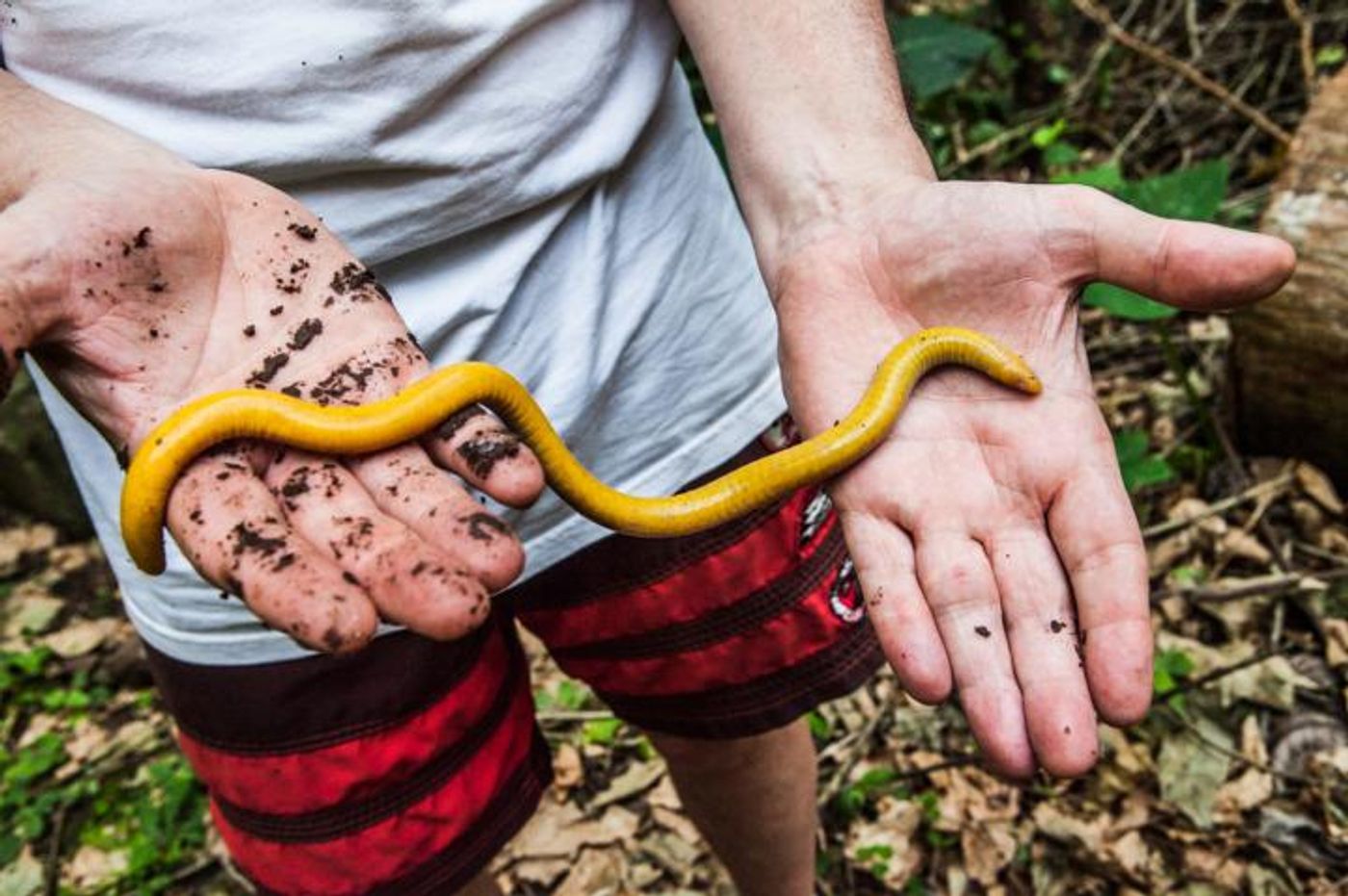The Unique Caecilians of São Tomé Island
There are many islands that have unique flora and fauna, like Madagascar, the Galapagos, or the islands of the Gulf of Guinea, where limbless burrowing amphibians called caecilians live. Researchers have now found evidence that there are two different species of caecilians on São Tomé Island. The findings have been reported in Molecular Ecology.
"To judge whether one species is in fact composed of multiple lineages, scientists have to build a case," explained senior study author and California Academy of Sciences Curator of Herpetology Rayna Bell. "By conducting a population level genomic study of these amphibians across the entire island, we are adding a crucial line of evidence that the São Tomé caecilian is actually two unique species."
The São Tomé caecilians were first described in colonial times by Portuguese scientists. Eventually, two categories of these animals were created based on their coloration and geography. But there's been disagreement over the years about whether or not they're actually distinct from one another.
In 2014, researchers used mitochondrial DNA to show that there were probably two unique species of caecilians, but that they may have been interbreeding.
"That earlier study was the first clue towards unraveling the mystery of the São Tomé caecilians," Bell said. "Our study provides further proof of the presence of two separate, interbreeding species and quantifies how much overlap, or hybridization, is occurring between them."
Bell and colleagues assessed genetic samples from 85 caecilians that lived in 21 places around the island. After finding that there are indeed two species, the researchers began to investigate when and how they diverged.
"It's pretty remarkable that there are two unique species on such a small island," said Academy collections manager and study co-author Lauren Scheinberg. "It really makes you wonder how natural selection is acting to drive speciation."
It seems that the divergence occurred about 300,000 years ago, which is also the time when there was a lot of volcanic activity in the area. The scientists suggested that lava flows may have separated the island into a patchwork of smaller habitats, each with its own environmental pressures. Once the lava flow ceased, the species eventually began to contact one another again and intermingle, and it became more difficult to tell them apart.
"These findings are an important reminder that islands are not static," Bell said. "Even though they can be small and isolated, they are dynamic systems that are actively accumulating new species. It's also an important consideration for the conservation of São Tomé caecilians to know that we have two, genetically and morphologically unique species."
Bell plans to continue to study these interesting creatures. "These are perhaps the most well-studied caecilians on Earth because of their accessibility and how long ago they were described to science. Yet there is still so much to learn about them, from their mating behavior to how they deter predators," Bell said. "For a biologist, what could be more exciting than that?"
Sources: AAAS/Eurekalert! via California Academy of Sciences, Molecular Ecology










